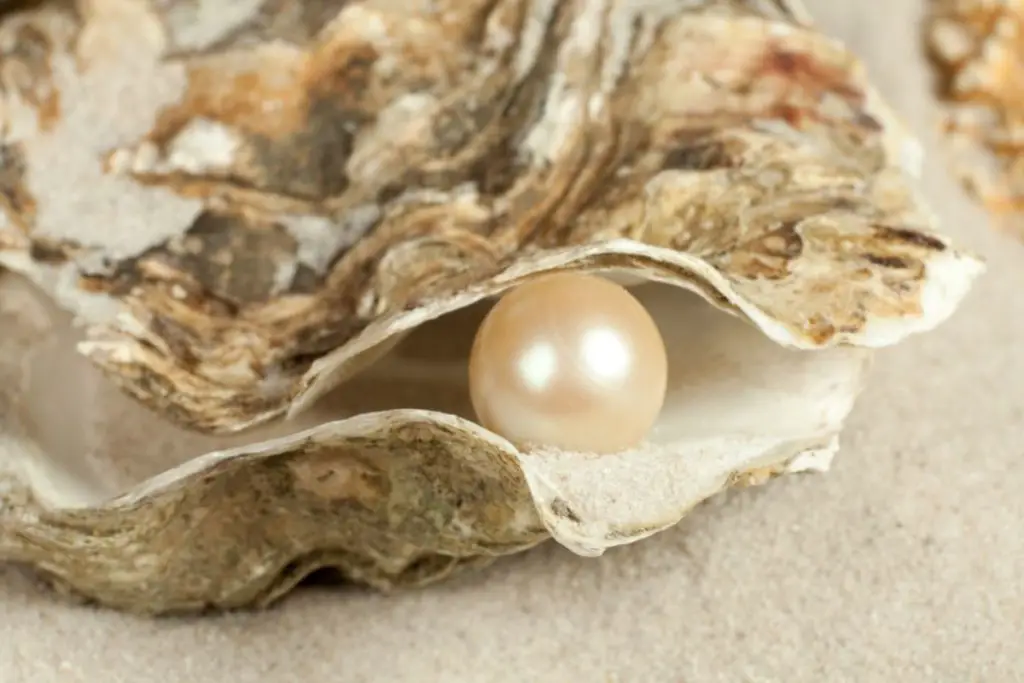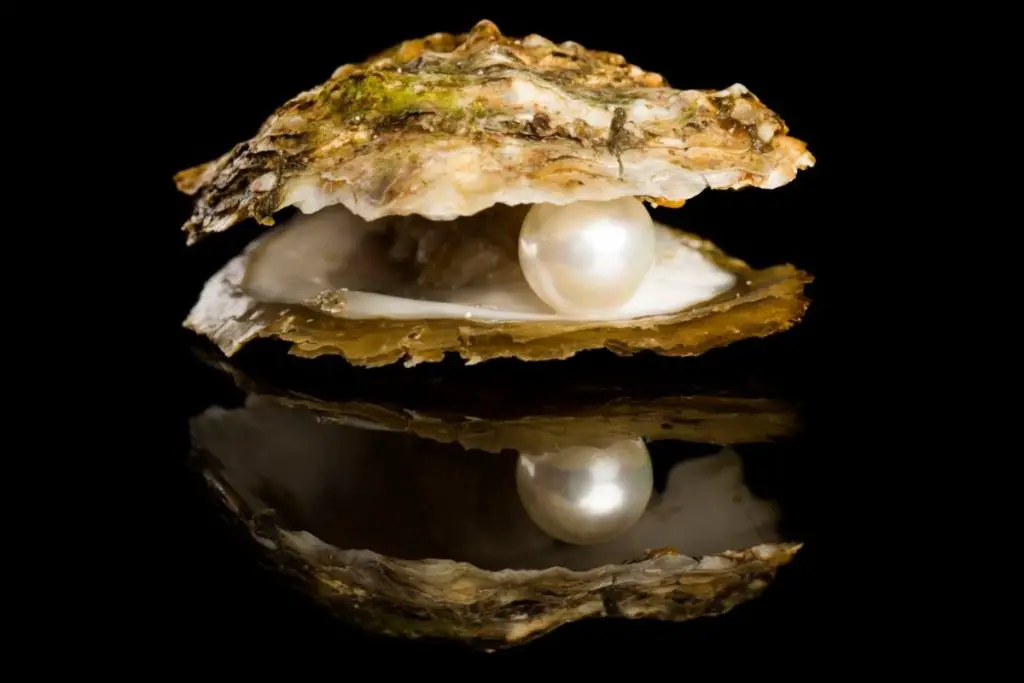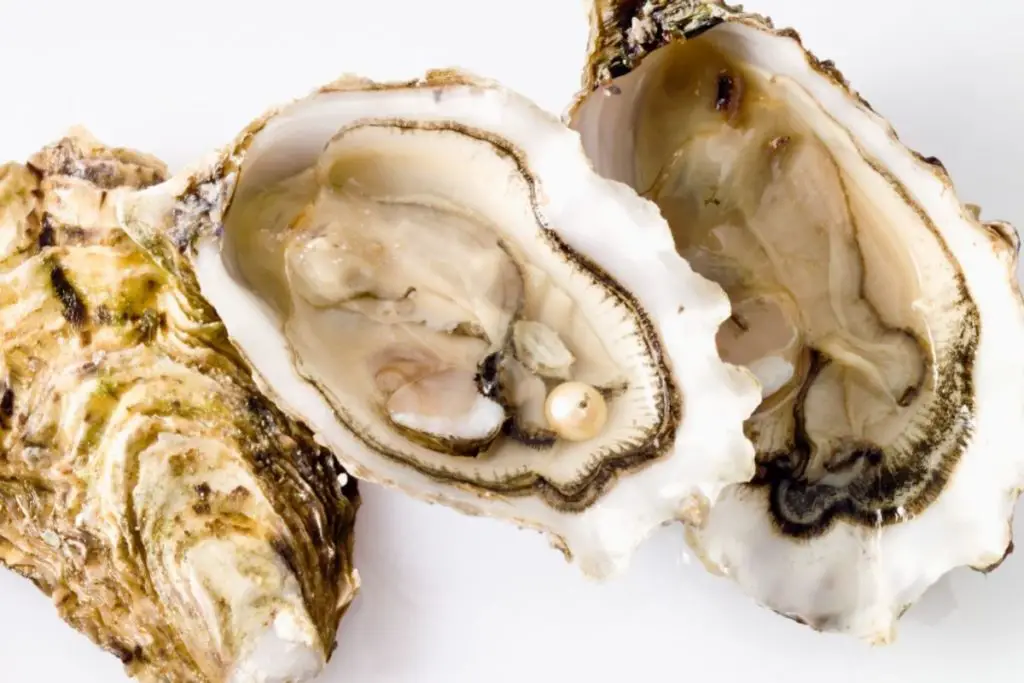We always associate delicate pearls with oysters. After all, natural pearls are found in oysters deep below the ocean’s surface.

However, you may be interested to learn that there are certain factors that are needed in order to produce these natural pearls. Not every single oyster that is harvested will actually have cultured pearls hidden inside, as these can take time to develop.
Today, we’re going to cover everything you need to know about natural pearls, how these are formed, and what the likelihood of finding a pearl in an oyster is. We’ll also cover which types of wild oysters actually form pearls, and whether you can find pearls in edible oysters.
So let’s find out everything you need to know about oysters and pearls!
What Are The Odds Of Finding A Pearl In An Oyster?
Everyone wants to crack open an edible oyster and find a cultured pearl nestled inside. You often hear stories of pearls being discovered in restaurant oysters. But how likely are you to find a real pearl inside an oyster? What exactly are the odds of finding genuine pearls inside an oyster?
Interestingly, the likelihood of finding an actual pearl inside your oyster is very, very rare. In fact, this is as low as 1 in 10,000 oysters being able to produce pearls.
Finding an oyster that has a jewelry grade wild pearl inside is even rarer, so there is an increased demand for farmed pearls to try to meet these requirements.
It’s also worth bearing in mind that there are different types of pearls which you can find. There are five main types of pearls: Tahitian pearls, freshwater pearls, natural saltwater pearls, Akoya pearls, and South Sea pearls.
Out of these different types of pearls, the Tahitian pearls are the most expensive. These are naturally black pearls because of their environment.
These black pearls are in high demand, and can fetch as much as $200 at their cheapest price, ranging all the way up to $36,000. This makes these signature black pearls a very valuable pearl to find!
Freshwater pearls are actually the most common type of natural pearl, so are less expensive than the signature Tahitian black pearls. These commoner pearls will likely only fetch a price of $20.
South Sea pearls are often considered to be one of the best for making jewelry. This is because South Sea pearls are larger pearls compared to freshwater pearls for example.
They tend to be between 8 mm and 16 mm in diameter, and tend to be cultivated from the Pinctada maxima saltwater oyster. South Sea pearls are most typically found between the Pacific and Indian oceans.
How Do Oysters Make Pearls?
So in order to understand why real pearls are so rare, we will need to understand a little more about how these are made. It is frequently assumed that natural pearls are only able to occur in oysters, however, these can also happen in all types of mollusks.

So you may be lucky enough to find a pearl nestled in freshwater mussels, or any type of bivalve mollusk.
They are of course most notably found in oysters. Pearls are the only type of precious stone that are made inside a living creature. This tends to happen when something – such as a piece of sand – irritates the shell of the oyster.
This then causes the mother-of-pearl to start its process of forming natural pearls.
Pearls are also known as layers of nacre, as this is what is used to create them. Pearls are formed via this natural reaction to an irritant, which then forms into a layer of nacre. The nacre is then covered by another layer of material called the mantle. This is where the pearl is created.
The pearl itself is made up of calcium carbonate, with some trace elements like iron and copper. Nacre itself is mostly constructed using aragonite.
The color of the pearl comes from the presence of tiny micro-crystals, which are part of the nacre. If you look closely at a pearl, you will see that it looks like a miniature version of coral. The shape of the pearl is determined by the size of the nacre.
The process of creating a pearl begins when the mother-of-pearl starts reacting to the irritant. As mentioned above, the mother-of-pearl reacts to the irritation by producing a layer of nacre around the irritant.
This then covers the irritant. Once the nacre has been produced, it is then covered by a protective layer of material called the outer mantle.
This outer mantle protects the mother-of-pearl while it is growing. When the mother-of-pearl reaches maturity, it sheds off the outer mantle.
At this point, the mother-of-pearl is ready to produce a pearl. The mother-of-pearl produces a small amount of nacre, which is then covered by the inner mantle. Once the nacre has been formed, it is covered by the final layer of the pearl, the outer mantle.
Once the outer mantle has been shed off, the mother-of-pearl now produces the actual pearl. The pearl is then released from the oyster. It is during this time that the pearl is still soft and fragile. The mother-of-pearl continues to grow until it becomes hard and stable.
How Long Does It Take For An Oyster To Make A Pearl?
It can take anywhere from 2 to 4 years for an oyster to form a pearl and for this to fully develop. However, once the pearl is fully developed, it will stay intact for many years. In fact, they have been known to last for over 100 years!

Ultimately, it will depend on the type of pearl that is being formed. For example, freshwater pearls don’t fetch as much on the market because they don’t take as much time to develop as saltwater pearls. Freshwater pearls feature layers of nacre that aren’t as compact, which means they can be produced a lot quicker.
Saltwater pearls tend to take anywhere between 5 and 20 years to create a pearl because of how compacted the nacre becomes over time.
How Do You know If An Oyster Has A Pearl?
Unfortunately, there is no easy way to see whether an oyster has a pearl hidden inside. The only way to find out whether your oyster has a pearl hidden inside is to open it up and see whether there is one there.
There are no obvious signs to help you discover whether a certain oyster has a pearl locked away inside.
However, the larger the oyster is, the more likely that there is a pearl hidden within the mantle tissue. This is because older and larger pearl bearing oysters will have had more time to form the pearl.
So chances are that if you opt for a larger oyster, it will likely have a pearl hidden within its protective layer.
In Summary
So there you have it! Now you know that not all oysters will have natural pearls hidden inside their shells. In fact, finding a perfectly formed pearl inside your oyster can be a rare occurrence.
Oysters will typically take anywhere between 5 and 20 years to create a pearl, and this can of course differ between different varieties of oysters.
There is also no obvious sign to look for to determine whether an oyster is hiding a pearl inside. Natural pearls are created when an irritant to the oyster’s shell gets covered in layers of nacre, also known as mother-of-pearl.
This becomes larger over time, and harder, to create the pearl that we all know and love.
